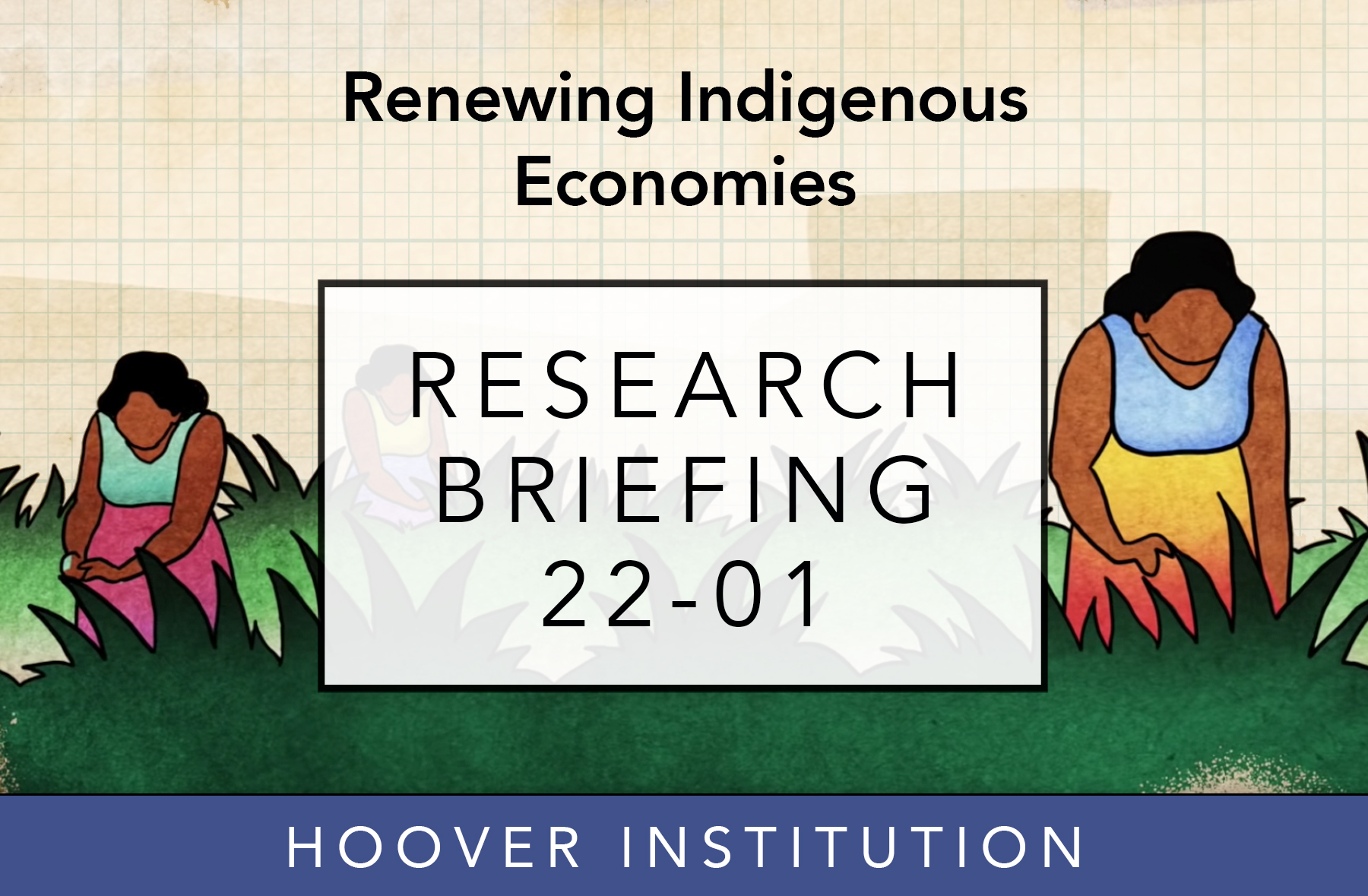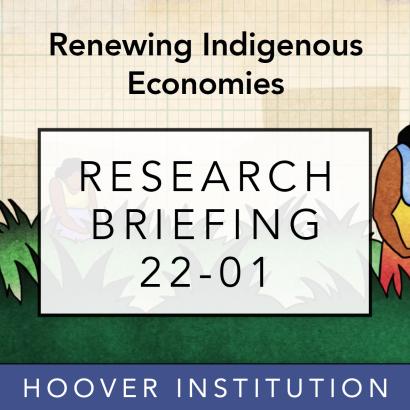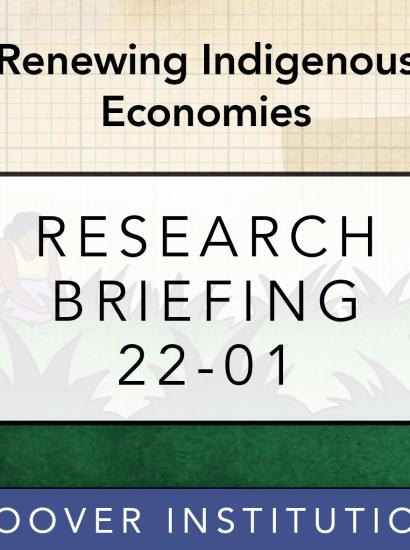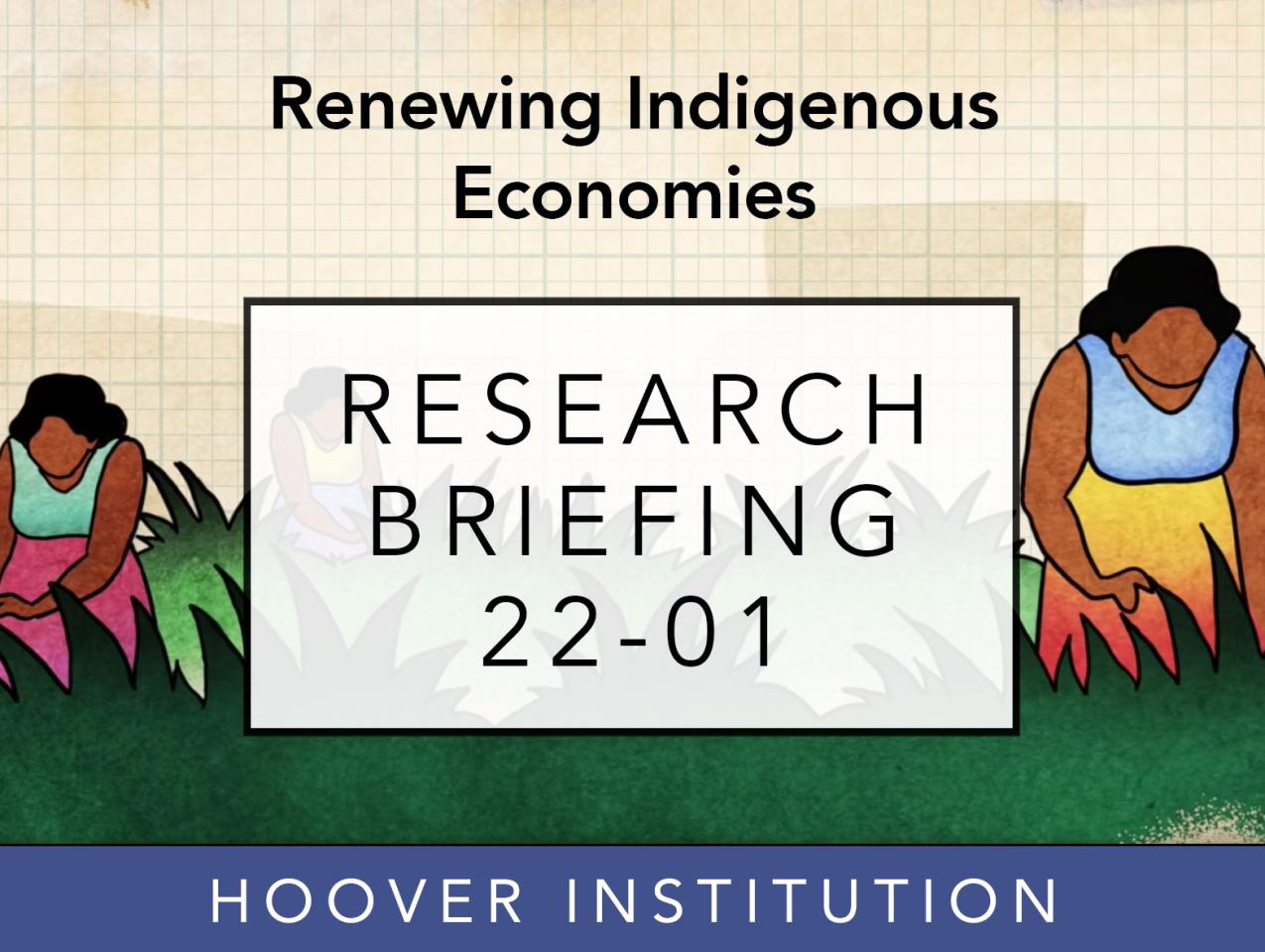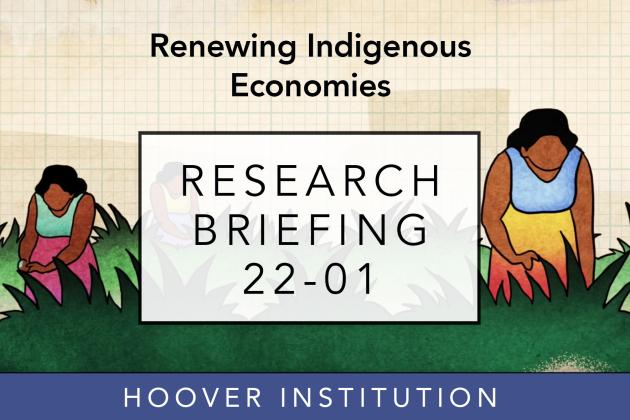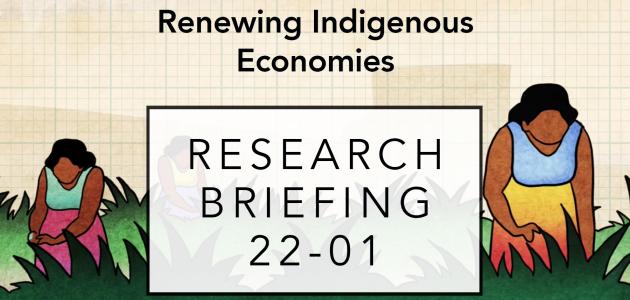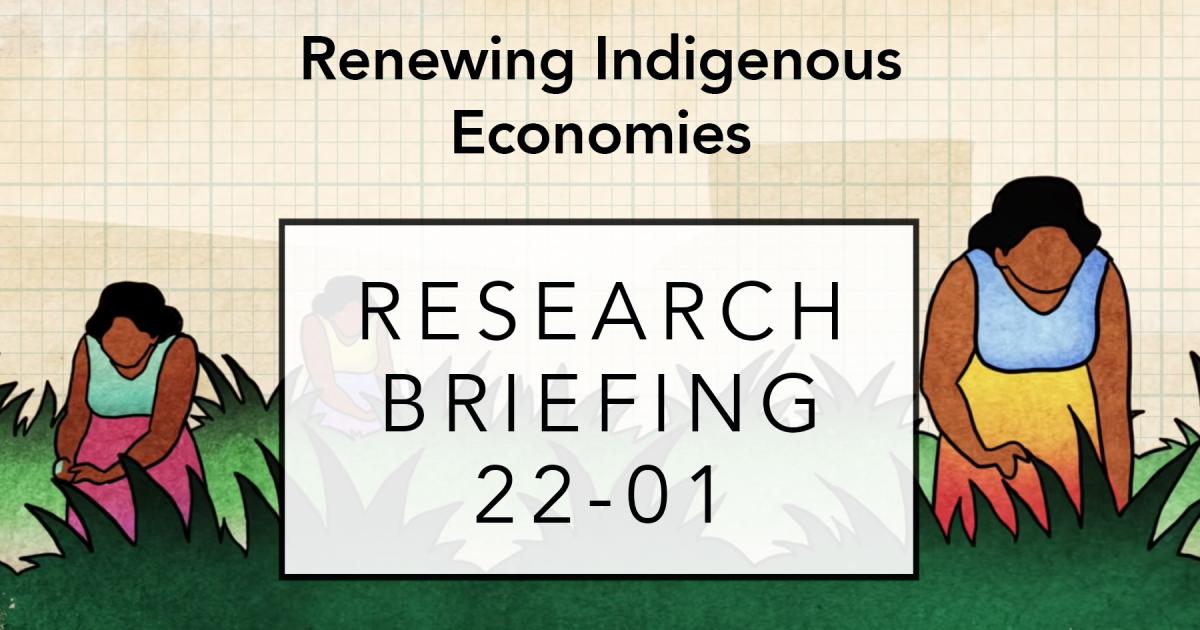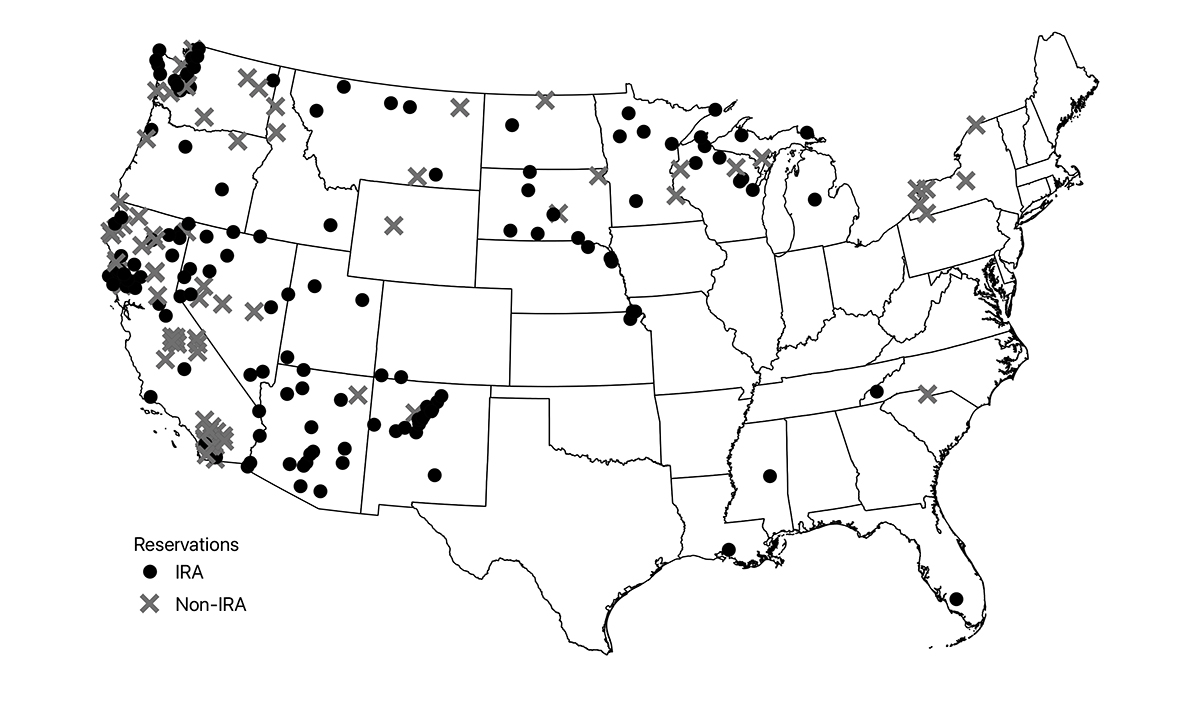
Statistical comparisons indicate that federal oversight through the Indian Reorganization Act of 1934 suppressed growth through 2018 for most tribes who did not forge their own governance path.
Based on Dustin Frye and Dominic P. Parker, “Indigenous Self-Governance and Development on American Indian Reservations,” American Economic Association (AEA) Papers & Proceedings 111 (2021): 233–37.
LESSONS FOR POLICY
- Indigenous self-governance is a pathway to robust long-run economic development.
- Mandatory federal oversight is not justifiable on the grounds that it is necessary to promote economic growth.
- Optional federal oversight might help a few tribes improve development, but this should be chosen by tribes rather than imposed upon them.
Self-Governance Increased L... by Hoover Institution
The Research Problem
The UN Declaration on the Rights of Indigenous People promotes self-government—autonomy in governing internal and local affairs—as a matter of social justice. But does self-government foster economic prosperity? Or does sovereignty come at the expense of economic development?
These are empirical questions, because theoretical reasoning points in both directions. On one hand, federal oversight can insure against risk, providing tribes with a safety net if local economies collapse. Oversight can also perhaps better connect Indigenous people to a uniform network of federal resources and business partners. On the other hand, federal agents are less likely than are tribal governments to understand local conditions well enough to identify profitable development projects. Federal agents are also not as easily held accountable when failing to capitalize on good opportunities. And projects under federal oversight are often delayed by bureaucratic red tape, making it difficult for tribal entrepreneurs to act quickly in dynamic business environments.
What We Examined
The empirical analysis focuses on important legislation governing American Indian nations, the 1934 Indian Reorganization Act (IRA). If adopted by majority vote, tribes organizing under the IRA were eligible for development programs administered by the Bureau of Indian Affairs (BIA). Tribes not organized under the IRA maintained more autonomy but had less access to federal resources. We compared the per capita income growth for American Indians on IRA versus non-IRA reservations from the 1930s through 2018 to evaluate the effect of federal oversight on average growth, and on the variability of that growth (figure 1).
We also compared average growth for a subset of reservations with narrowly determined IRA elections to strengthen the case that observed differences across reservation types are caused by the IRA. This is the set of tribes that would have been governed by an alternative regime had just a small proportion of eligible families voted differently. The idea is that IRA designation within this subset is effectively random, because it likely reflects idiosyncratic differences in preferences across a few families rather than any fundamental difference in tribal growth potential.

Fig. 1 IRA and non-IRA Reservations. The dots denote centroids of reservations opting for IRA governance, and the Xs denote non-IRA reservations. These designations are based on voting data. Roughly two-thirds of reservations were irreversibly organized under the IRA.
What We Found
Historical research, anecdotes, and statistical comparisons reveal stark differences in federal oversight across IRA and non-IRA reservations, especially from the 1930s through the 1970s. Our statistical comparisons indicate that BIA involvement in tribal projects was 42 percent higher on IRA versus non-IRA reservations during this period. This is reflected in accounts from tribal government meetings, which indicate that BIA personnel considered the IRA tribal governments as mere advisory bodies. Self-determination legislation during the 1970s mitigated this difference in oversight and, by the 1980s, the BIA was involved in an equal proportion of projects on IRA and non-IRA reservations.
How did this affect economic growth? After controlling for reservation incomes in the 1930s and other relevant factors, we found the average IRA tribe had 12 to 16 percent lower income per capita when compared to the average non-IRA tribe by 2018. Most of the differences emerged between the 1930s and 1980, when federal Indian policy was particularly interventionist. The effect of IRA status was weaker over 1980–2018 as federal policies favoring self-governance for all tribes took hold and differences in federal oversight over IRA versus non-IRA reservations waned.
The variance in income growth was a bit higher across non-IRA tribes, suggesting that the IRA may have been a safety net for a handful of tribes in helping them avoid worse economic outcomes. Still, the evidence suggests this insurance against low-end outcomes came at a high price, because the IRA suppressed growth for the majority of tribes.
Author Affiliations
Dustin Frye is an economist at Vassar College and a 2019–20 Campbell Visiting Fellow at the Hoover Institution at Stanford University.
Dominic Parker is an economist at the University of Wisconsin and the Ilene and Morton Harris Visiting Fellow at the Hoover Institution.







